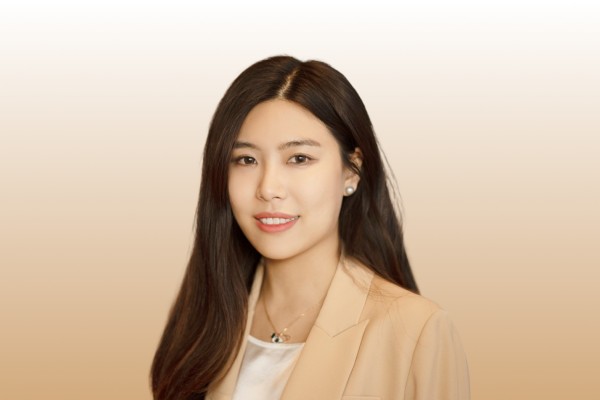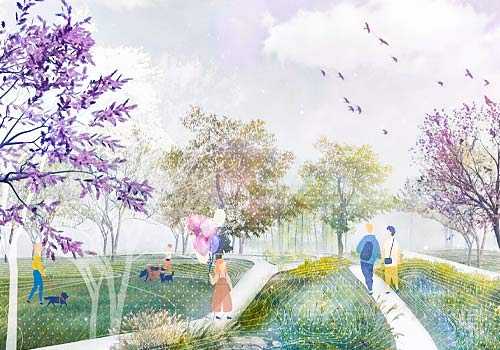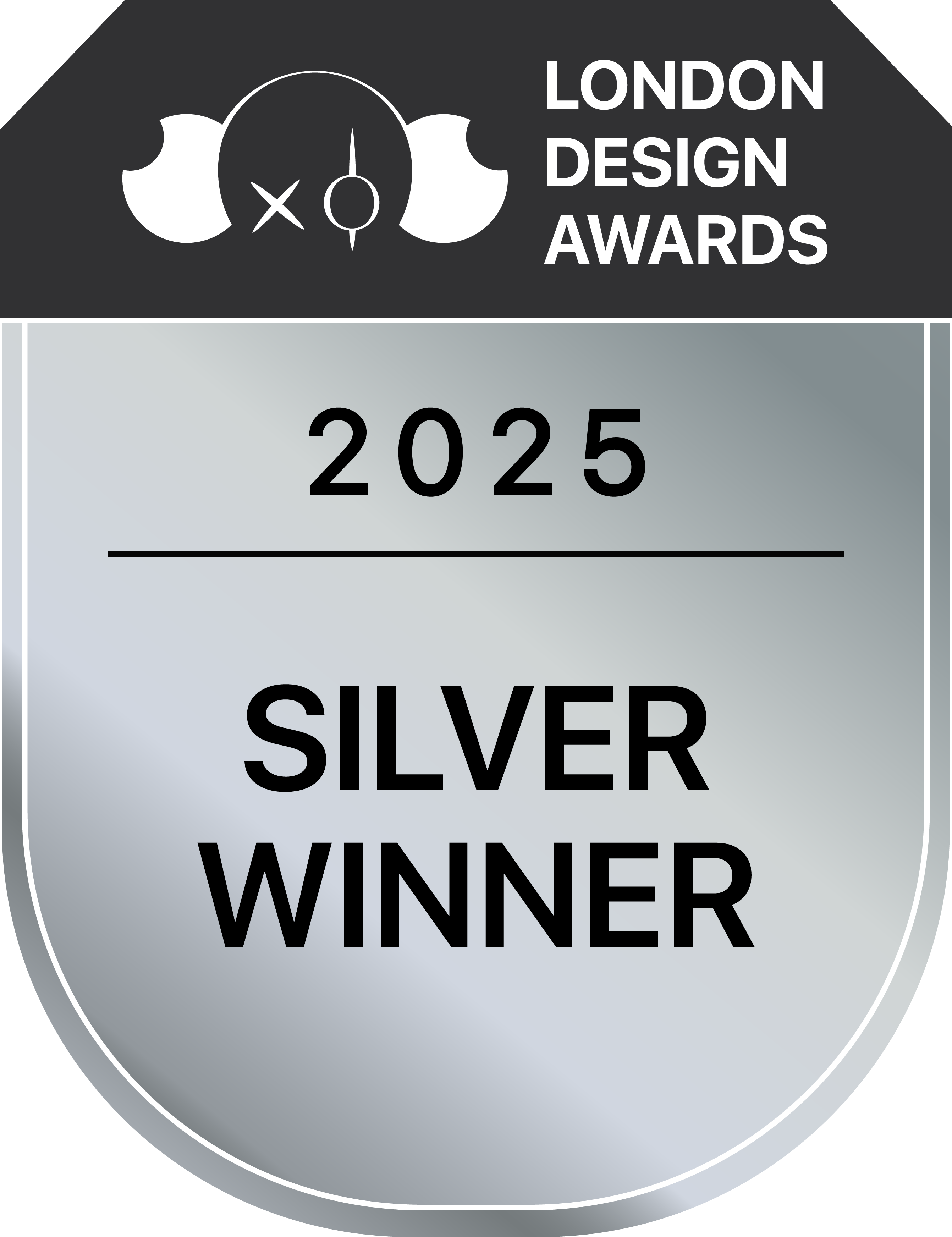
Xenia Siwen Xie
1. Congratulations on winning the London Design Awards! Can you introduce yourself and share about what inspired you to pursue design as a career?
Thank you! I’m Xenia Siwen Xie, a UX/Product Designer with a background in landscape architecture. I began my career by designing physical environments that improved the way people interact with space.
Over time, I became increasingly fascinated by how digital products can shape human behaviour just as powerfully, if not more than physical ones. That curiosity led me to transition into UX design, where I now focus on complex enterprise systems and emerging technologies like generative AI.
What inspires me most about design is its potential to solve meaningful problems and improve lives. Whether it’s simplifying a workflow or creating an emotional connection through interaction, I’m driven by the idea that design can make the invisible, like needs, emotions, or systems, visible and actionable.
2. What does being recognised in the London Design Awards mean to you?
Being recognised by the London Design Awards is incredibly meaningful to me. It affirms the value of designing with intention, not just for usability or beauty, but for the greater good.
I love exploring materials and pushing the boundaries of what design can communicate, especially when it comes to environmental impact. This award reinforces my belief that thoughtful design, grounded in domain knowledge and curiosity, can spark awareness and inspire change.
It’s a reminder to keep creating work that resonates beyond the screen or space, work that can contribute to a more sustainable future.
3. How has this achievement impacted your career, team, or agency, and what opportunities has it brought so far?
This recognition has been both encouraging and energising. It’s opened up meaningful conversations with peers and professionals who share a passion for design with purpose, especially in the areas of sustainability and emerging technology.
For my own career, it’s reinforced the direction I’m moving toward: combining UX expertise with environmental insight to create work that’s both innovative and impactful. It’s also helped broaden my visibility as a designer who’s not afraid to experiment and tell stories through interaction and materiality.
I’m excited about the new collaborations and opportunities this might lead to, especially those that allow me to keep learning and contributing to design that matters.
4. What role does experimentation play in your creative process? Can you share an example?
Experimentation plays a crucial role in my creative process. It is how I bridge environmental research with design intuition. I often use it as a way to translate complex ecological data into tangible, designable elements, especially when working with landscapes that are overlooked or misused, like landfills.
In this project, I explored how engineered, capped landfills, often treated as static or finished sites, could be reimagined through topographic design. I tested different landform typologies in relation to climate factors like solar exposure, wind direction, and soil moisture to see how reshaping the surface could support rewilding and restore ecological function.
It was a process of iterating through models, climate simulations, and environmental analysis to arrive at forms that are not only visually compelling but also responsive and regenerative.
For me, experimentation is not about perfection. It is about possibility. In this case, it helped transform a rigid, degraded urban leftover into a landscape with renewed ecological potential.
5. What's the most unusual source of inspiration you've ever drawn from for a project?
One of the most unusual sources of inspiration I’ve drawn from was actually the engineered structure of a capped landfill itself. At first glance, its rigid geometry and steep slopes seemed like a limitation. But the more I studied it, the more it revealed — not just about engineering practices, but about how we choose to hide or “finish” parts of the urban environment we no longer want to see.
That tension between concealment and potential became the conceptual core of the project. It inspired me to rethink the landfill not as a dead space, but as a dormant landscape with the possibility to evolve. Sometimes, the most unconventional forms or forgotten places hold the richest design opportunities — if we’re willing to look at them differently.
6. What’s one thing you wish more people understood about the design process?
I wish more people understood that design is not just about making things look good. It’s a deeply iterative and research-driven process that involves questioning assumptions, testing ideas, and often embracing uncertainty. Good design requires patience, empathy, and a willingness to explore multiple possibilities before arriving at a solution that truly works for people and context.
Design is as much about solving problems as it is about creating beauty, and sometimes, the most impactful solutions come from the most unexpected or imperfect ideas. It’s a journey of discovery, not just a final product.
7. How do you navigate the balance between meeting client expectations and staying true to your ideas?
Navigating the balance between client expectations and my own design ideas starts with open communication and empathy. I make it a priority to deeply understand the client’s goals, constraints, and vision, so I can align my work with their needs.
At the same time, I bring my expertise and domain knowledge to the table to propose solutions that are both innovative and practical. When there’s tension between the two, I see it as an opportunity to educate and collaborate, sharing the rationale behind my ideas while listening openly to feedback.
Ultimately, design is a partnership. By fostering trust and mutual respect, I can help clients see the value in creative approaches that also meet their objectives.
8. What were the challenges you faced while working on your award-winning design, and how did you overcome them?
One of the main challenges was reconciling the rigid, engineered form of capped landfills with the goal of creating a dynamic, ecologically functional landscape. These sites are typically seen as static and limited in their capacity to support natural processes.
To overcome this, I approached the problem through extensive experimentation with topographic forms and environmental factors such as solar exposure, wind patterns, and soil moisture. Using iterative modelling and climate simulations, I was able to identify landform shapes that could adapt to and enhance local microclimates, supporting rewilding efforts.
Another challenge was communicating the value and potential of these transformed landscapes to stakeholders who may initially see landfills as unusable “no man’s land.” I focused on creating clear visualisations and narratives that showed how design interventions could restore ecological function and improve urban environments.
By combining rigorous analysis with creative storytelling, I was able to navigate these challenges and deliver a design that is both innovative and grounded in real-world impact.
9. How do you recharge your creativity when you hit a creative block?
When I hit a creative block, I find stepping away from the screen and immersing myself in nature really helps. Whether it’s a walk in the forest or simply observing natural patterns and landscapes, reconnecting with the environment often sparks new ideas and perspectives.
I also like to experiment with materials or sketch freely without any pressure, which lets my mind wander and opens up unexpected directions. Sometimes, reading broadly — from design theory to ecology or even unrelated topics — fuels my curiosity and helps me approach the problem from a fresh angle.
For me, creativity is cyclical. Giving myself space to explore without expectation is often the best way to recharge and come back with renewed energy.
10. What personal values or experiences do you infuse into your designs?
I infuse my designs with a deep respect for the environment and a commitment to sustainability. Growing up surrounded by nature and studying landscape architecture, I developed a strong awareness of how human interventions impact ecosystems.
11. What is an advice that you would you give to aspiring designers aiming for success?
My advice to aspiring designers is to stay curious and embrace experimentation. Don’t be afraid to explore unconventional ideas or challenge established norms, that’s where innovation happens. Also, develop empathy for your users and the environment you’re designing for.
Understanding real needs and contexts will help you create solutions that truly matter. Finally, be patient with the process. Success rarely comes overnight. Keep learning, stay open to feedback, and remember that every challenge is an opportunity to grow both as a designer and as a person.
12. If you could collaborate with any designer, past or present, who would it be and why?
If I could collaborate with any designer, I would choose Isamu Noguchi. His ability to blend art, landscape, and functional design has always deeply inspired me. Noguchi’s work demonstrates how design can harmonise with nature while serving human needs in elegant and poetic ways.
Collaborating with him would be an incredible opportunity to learn how to balance creativity with environmental sensitivity and cultural meaning. I admire how his designs feel timeless yet innovative — a quality I strive for in my own work.
13. What's one question you wish people would ask you about your work, and what's your answer?
One question I wish people would ask is, “How does your design connect people to the environment in meaningful ways?”
My answer is that I strive to create work that goes beyond aesthetics or function to foster awareness and empathy for the natural world. By integrating ecological insights with interactive and sensory experiences, I aim to make the invisible forces shaping our environment more tangible.
Design, for me, is a way to tell stories that inspire people to see their relationship with nature differently and consider their role in its future.

